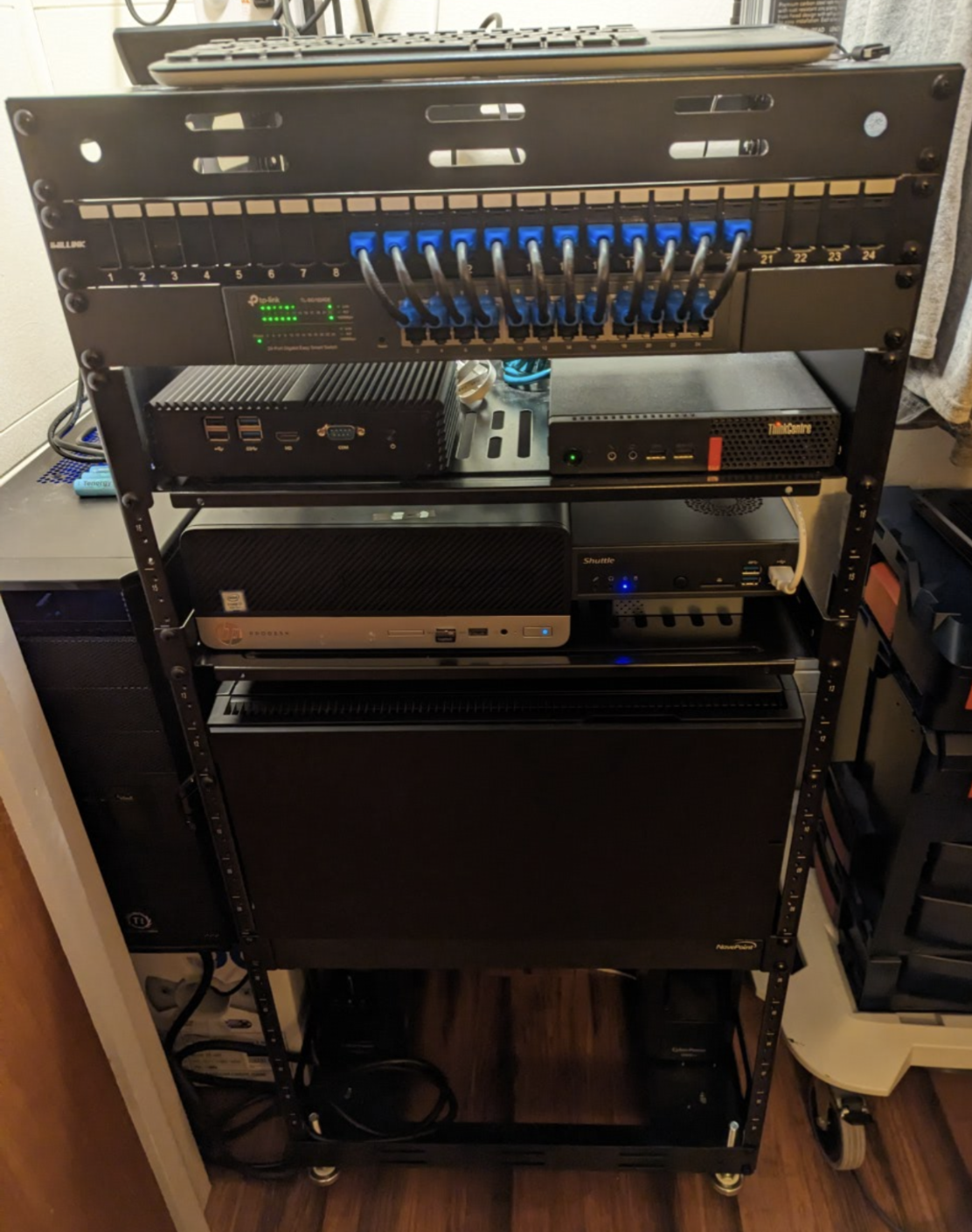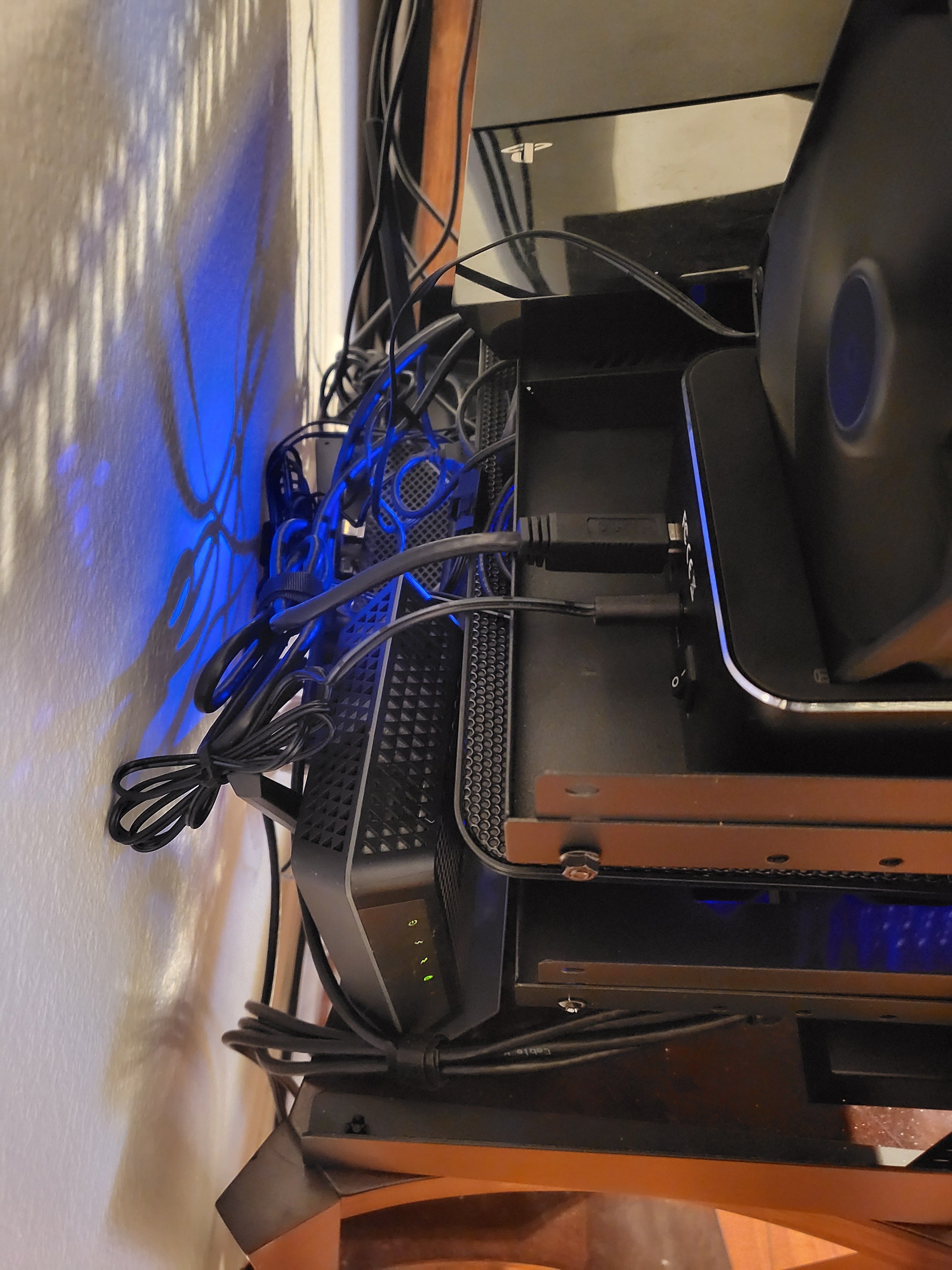 From top to bottom:
From top to bottom:
- Patch panel (with artisinal, handmade cables)
- TP-Link managed switch Shelf 1:
- PFSense 4 port firewall
- Lenovo m910q w/Proxmox (cluster node 1) running 2 VMs for docker hosting: Ubuntu for media stuff (arrs, navidrome, jellyfin, calibre, calibre-web, tubesync, syncthing) and Debian for other stuff (paperless-ngx, vikunja, vscodium, redlib, x-pipe webtop, fasten health, linkwarden, alexandrite), 1 Win 10 VM for the very few times I need to use windows, some Red Hat Academy student and instructor RHEL 9 VMs, and an OPNsense VM for testing Shelf 2:
- HP Elitedesk G5 800 SFF w/Proxmox (cluster node 2) with an Nvidia GT 730 passed through to a Debian VM used primarily as a remote desktop via ThinLinc, but also runs a few docker containers (stirling pdf, willow application server, fileflows)
- Shuttle DH110 w/Proxmox (cluster node 3) with 1 VM running Home Assistant OS with an NVME Coral TPU passed through as well as a zooz 800 long range zwave coordinator (the zigbee coordinator is ethernet and in a different room) and two LXCs with grafana and prometheus courtesy of tteck (RIP) Shelf 3:
- WIP Fractal R5 server to replace the ancient Ubuntu file server to the left (outside the rack, sitting on the box of ethernet cable) that is primarily the home of my media drives (3 12 TB Ironwolf drives) and was my first homelab server. The new box will have a Tesla p4 and RX 580 GTX, i7-8700T and 64GB RAM in addition to the drives from the old server. I'll be converting the Ubuntu drive from the old server into an image and will use it to create a Proxmox VM on the new server, with the same drives passed through. Bottom:
- 2 Cyberpower CP1000 UPS with upgraded LiFePO4 batteries. The one on the left is only for servers and only exists to give the servers time to shut down cleanly when the power goes out. The one on the right is only for network devices (firewall, switch and the Ruckus R500 out of shot mounted higher in the closet)

